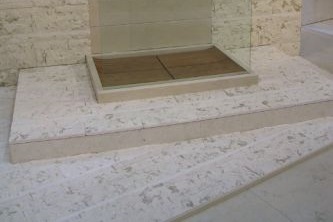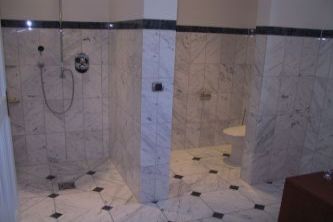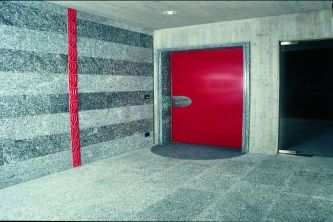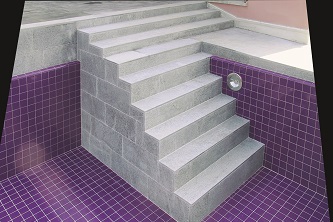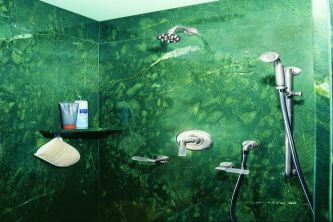Natural stone advice
As an element of nature the natural stone is very popular with customers and architects. Natural stone can be perfectly combined with other materials and provides each room an elegant appearance. Thanks to the variety of texture, color and appearance each stone is a unique specimen. By direct procurement, independence and always looking for the latest products, we can present you a variety of ideas. A constant drive for innovation using the latest technology such as water jet, robots and CNC machines, allows us a variety of new products and unique surface finishes.
Marble / limestone
Marble is a limestone. Marble is
either pure white or tinted in different colors by metal oxides or other impurities
and often penetrated by calcite veins. The higher the crystalline fraction, the
more intense is the light transmittance.
Areas: living area, bathrooms in private areas
Granite
Granite is a primary rock, which
is caused by solidification of liquid magma below the surface. Granite is a
very hard rock, unlike the marble. The quartz gives the granite hardness.
Granite is more resistant and acid resistant. Most occurrences in Switzerland
are titled as granite, which is actually wrong. What looks like granite and got
dismantled in Switzerland is called gneiss. The composition is almost the same
as granite, but the gneiss was under strong mechanical influences such as
pressure, folding and rolling.
Applications: kitchen tops, fireplace benches, facades, coverings, outside seating areas.
Slate
The slate stone belongs to the deposit
formation stones. The slate was corroborated and solidified by the deposition
of fine clay, lime mud, with quartz grains under the pressure of rocks. The
structure consists of many layers, hence the name slate.
Applications: flooring, coverings
Quartzite
Quartzites are fine to medium
grained metamorphic rocks, which are defined with quartz content of 98 percent.
They are characterized by large resistance to environmental influences. Pure
quartzite is mainly whitish-gray or white, such as the silver quartzite coming
from Italy. Yellow and red color are caused by impurities of iron minerals. The
frequently occurring yellow variants are caused by the existing mineral
limonite from the primary rocks. Impurities of magnetite and pyrite quartzite
is sometimes brown or gray, rare colors are dark green or gray-blue. The
mineral dumortierite or kyanite stains the quartzites bluish to blue.
Application: flooring, coverings
Sandstone
Sandstone is a sedimentary rock
(also "sedimentit") from cemented sand grains, which consist
primarily of quartz. The sand grains are between 0,063 and 2 mm. With an
increased concentration of other minerals the stone is called arkrose (with
feldspars) or greywacke (with rock fragmants). When most grains are larger than
2 mm, then one speaks of a conglomerate (with rounded grains) or a breccia
(with angular grains).
Application: coverings, moldings and columns
Basalt
Basalt is a basic (SiO2 poor)
effusive. It consists mainly of a mixture of iron and magnesium silicates with olivine
and pyroxene as well as calcium-rich feldspar (plagioclase). Basalt is the volcanic
equivalent of gabbro (plutonite), which has the same chemical composition.
Basalt arises when low-viscosity, low-silica magma emerges on the surface and
rapidly cooled to basalt. Basalt is usually dark gray to black.
Application: flooring, coverings
Natural stone requires proper care and maintenance. We provide you with the right detergent and stay at your disposal.
